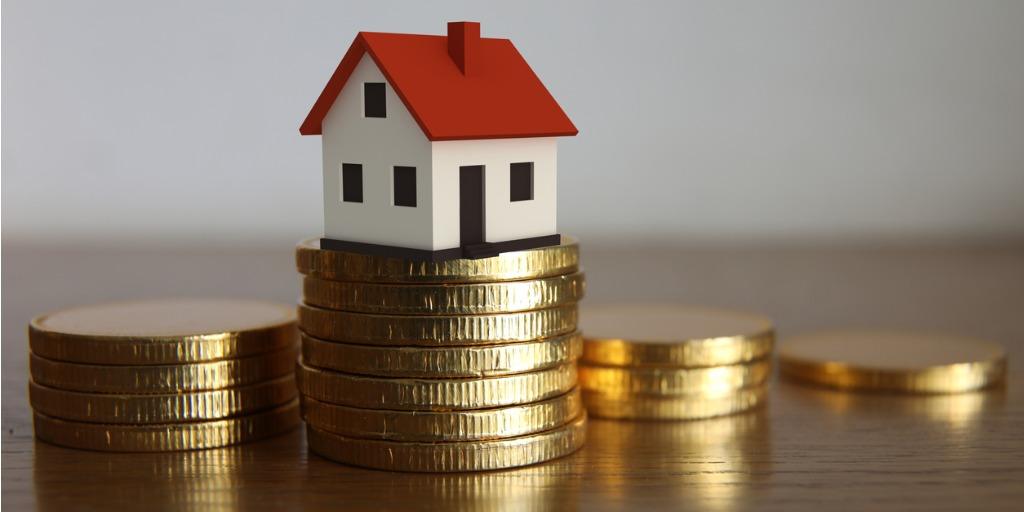
In this article, we’ll break down the concept of rental yield in simple terms.
We’ll explain why the rental yield is important for property investors and how it can guide your investment decisions.
Additionally, we’ll explore the factors that affect rental yield calculation and introduce you to rental yield calculators, powerful tools that can save you time and effort in determining the rental yield of your investment property.
Key Takeaways
| Key Takeaway | Explanation |
|---|---|
| Rental yield | Rental yield is the percentage of the annual rental income generated by a property in relation to its purchase price. It helps property investors assess the potential return on investment and determine if the rental income covers expenses. |
| Factors affecting rental yield | Several factors affect rental yield calculation, including the purchase price, monthly rental income, location, vacancies, and ongoing maintenance costs. Understanding these factors is crucial for determining rental yield and identifying opportunities to optimize returns. |
| Gross rental yield | Gross rental yield is calculated by dividing the annual rental income by the property’s purchase price, expressed as a percentage. It does not consider expenses associated with owning the property. |
| Net rental yield | Net rental yield factors in expenses such as taxes, maintenance costs, and other related expenses to provide a more accurate estimate of the actual return on investment. It is calculated by subtracting expenses from the annual rental income and dividing the result by the property’s purchase price, expressed as a percentage. |
| Importance of rental yield | Rental yield helps property investors assess the profitability of their investment by comparing it to industry benchmarks and similar properties in the same location. It enables investors to measure their property’s income-generating performance and make informed decisions to maximize returns. |
| Rental yield calculator | A rental yield calculator is a useful tool that helps property investors quickly and accurately calculate the rental yield of an investment property. By entering data such as monthly rental income and purchase price, the calculator generates calculations for both gross and net rental yield, saving time and effort. |
| Steps to calculate rental yield | To calculate rental yield, determine the purchase price, calculate the annual rental income by multiplying the monthly rent by 12, divide the annual rental income by the purchase price, and multiply the result by 100% to obtain the rental yield percentage. |
| Impact of annual rental income, property value, and vacancy on rental yield | Annual rental income and property value directly impact rental yield. Higher rental income and lower property value increase rental yield, while lower rental income and higher property value decrease it. Vacancy rates also affect rental yield, as longer vacancy periods decrease rental income and can impact the investor’s return on investment (ROI). |
| Gross rental yield vs. net rental yield | Gross rental yield does not consider expenses, while net rental yield factors in expenses associated with owning the property. Net rental yield provides a more accurate estimate of the actual return on investment by considering additional costs such as taxes and maintenance. |
| Importance of calculating net rental yield | Calculating net rental yield is crucial for property investors as it provides a more accurate estimate of the actual return on investment. It takes into account expenses associated with owning the property, enabling investors to make informed decisions and optimize their returns. |
| Impact of mortgage payments and expenses on rental yield | Mortgage payments and other expenses associated with owning the property significantly impact rental yield. These costs must be considered when calculating rental yield to ensure an accurate reflection of the property’s profitability. |
| Evaluating rental yield for investment properties | Property investors can use rental yield to evaluate investment properties by comparing them to industry benchmarks and similar properties in the same location. Rental yield combined with factors such as maintenance costs, vacancies, and location can help identify opportunities to optimize returns and grow wealth through property investment. |
| Importance of considering rental yield with other factors | Rental yield is just one of many factors to consider when making property investment decisions. Other factors include |
Understanding Rental Yield Calculation

What is rental yield?
Rental yield is a measure of the income return on your investment property.
It represents the percentage of the annual rental income generated by your property in relation to the property’s purchase price.
Simply put, rental yield is the amount of money you earn from renting out your property as a percentage of the property’s value.
Why is rental yield important for property investors?
Rental yield is important for property investors as it helps them determine the potential return on investment they can expect from their property.
By calculating rental yield, investors can assess whether the rental income generated by their investment property is sufficient to cover their expenses, including mortgage payments, taxes, maintenance costs, and other related expenses.
What are the factors that affect rental yield calculation?
Several factors affect rental yield calculation, including the purchase price of the property, the monthly rental income, the location of the property, any vacancies, and ongoing maintenance costs.
Understanding these factors is important in determining the rental yield of your investment property and identifying opportunities for optimizing your returns.
Importance of Rental Yield for Property Investors
How does rental yield help property investors?
Rental yield helps property investors assess the profitability of their investment by providing a clear picture of their potential return.
Understanding rental yield enables investors to measure their investment property’s income-generating performance against industry benchmarks and compare their investment to similar properties in the same location.
What are the differences between gross rental
yield and net rental yield?
Gross rental yield is calculated as the annual rental income generated by the property divided by the property’s purchase price, expressed as a percentage.
It does not take into account any expenses related to owning the property, such as taxes, maintenance costs, and other related expenses.
On the other hand, net rental yield factors in these expenses give a more accurate estimate of the actual return on investment.
How can a rental yield calculator help property
investors?
A rental yield calculator is a powerful tool that can help property investors quickly and easily calculate the rental yield of their investment property.
By entering data such as the monthly rental income and the property’s purchase price, a rental yield calculator can generate accurate calculations of the investment property’s gross and net rental yield.
This can save property investors time and effort in manually calculating their rental yield.
Factors Affecting Rental Yield Calculation

What is the rental yield formula, and how is it used?
The rental yield formula is a powerful tool that helps property investors calculate the rental yield of their investment property.
The formula for rental yield is calculated as follows:
Rental yield = (Annual rental income / Property value) x 100%
What are the steps to calculate rental yield?
The steps to calculate rental yield are as follows:
1. Determine the purchase price of the investment property.
2. Calculate the annual rental income earned from the property by multiplying the monthly rent by 12.
3. Divide the annual rental income by the property’s purchase price.
4. Multiply the result by 100% to get the rental yield percentage.
How do annual rental income, property value, and vacancy
affect rental yield calculation?
The annual rental income, property value, and vacancy are important factors that affect rental yield calculation.
Rental yield increases when the annual rental income is higher, and the property value is lower and decreases when the reverse is true.
Vacancy rates or the number of months the property is vacant can also significantly affect rental yield.
If there is a long vacancy period, the rental income will decrease, and the investor’s ROI will be affected.
Rental Yield Formula Explained
What is the difference between gross rental yield and net rental yield?
Gross and net rental yields differ mainly in their inclusion of expenses related to owning the property.
Gross rental yield does not take into account any expenses, while net rental yield considers the expenses associated with running the investment property, thus providing investors with a more accurate picture of their actual return on investment.
Why is it important for property investors to calculate net rental yield?
Calculating net rental yield is important for property investors as it gives them a more accurate estimate of their actual return on investment.
Net rental yield takes into account the expenses associated with owning the investment property, such as property taxes, maintenance costs, and other related expenses.
This information ensures that investors can make informed decisions about their property investments to maximize their returns.
How can mortgage payments and other expenses affect rental yield?
Mortgage payments and other expenses can significantly impact rental yield, representing a significant cost associated with owning the investment property.
Investors must take these into account when calculating rental yield to ensure that their investment property’s overall profitability is accurately reflected.
Step-by-Step Guide to Calculating Rental Yield

What are the steps involved in calculating rental yield?
The steps involved in calculating rental yield are simple:
- Determine the purchase price of the investment property.
- Calculate the monthly rental income earned from the property.
- Multiply the monthly rental income by 12 to determine the annual rental income.
- Divide the annual rental income by the property’s purchase price to get the rental yield as a percentage.
How can property investors use rental yield to evaluate
investment properties?
Property investors can use rental yield to evaluate their investment properties by comparing them to industry benchmarks and similar properties in the same location.
Rental yield can also help investors identify opportunities for optimizing their returns, particularly when combined with other factors such as ongoing maintenance costs, vacancies, and location.
Ultimately, rental yield is essential for investors seeking to grow their wealth through property investment.
Why is it important to consider rental yield along with other
factors when investing in properties?
Rental yield is just one of many factors that property investors must consider when making investment decisions.
Other considerations may include capital appreciation, rental rates, vacancy rates, property prices, and ongoing maintenance costs.
To make informed decisions about property investment, investors must consider all of these factors, in addition to rental yield, to determine whether an investment is likely to be profitable and assess its overall potential ROI.
By following this quick and simple guide, property investors in Singapore can easily calculate rental yield and make informed decisions about their investment properties.
Remember, however, that rental yield is just one factor among many in property investment, and each investment opportunity requires thoughtful consideration of all relevant factors to achieve optimal returns.
Evaluating Rental Yield: Gross vs. Net Rental Yield
What is the difference between gross and net rental yield?
Gross rental yield is calculated by dividing the annual rental income by the property purchase price and multiplying the result by 100.
Gross rental yield does not take into account any expenses related to the property investment.
Net rental yield, on the other hand, takes into account annual expenses related to the property.
The calculation takes into account expenses such as property taxes, insurance, maintenance costs, and other expenses incurred to maintain the property.
How do you calculate gross rental yield?
To calculate gross rental yield, divide the annual rental income by the property purchase price.
Multiply the result by 100 to get the rental yield percentage.
For example, if the annual rental income of a property is $21,000, and the property purchase price is $350,000, the gross rental yield can be calculated as follows:
Gross rental yield = (Annual rental income / Property purchase price) x 100
Gross rental yield = ($21,000 / $350,000) x 100 = 6%
How do you calculate net rental yield?
To calculate net rental yield, you need to take into account all the annual expenses related to the property.
To calculate net rental yield, take the property’s annual rental income and subtract the annual expenses.
Divide the result by the property purchase price and multiply by 100 to get the rental yield percentage.
For example, suppose the annual rental income of a property is $21,000, and the total annual expenses (including property taxes, insurance, maintenance costs, etc.) for the property come out to be $5,000. In that case, the net rental yield can be calculated as follows:
Net rental yield = [(Annual rental income – Annual expenses) / Property purchase price] x 100
Net rental yield = [($21,000 – $5,000) / $350,000] x 100 = 5.14%
Maximizing Rental Yield: Tips for Property Investors

How can you increase rental yield?
There are several ways to increase the rental yield of an investment property.
One way is to increase the rent charged to the tenants.
However, landlords need to ensure that the rent is increased reasonably and in line with the rental prices in the area.
Another way to increase rental yield is by adding more units to the property.
By adding more units, landlords can increase their rental income without purchasing another property.
Improving the condition and aesthetics of the property can also attract better tenants willing to pay higher rents.
Also, landlords can offer free Wi-Fi, laundry facilities, or parking spaces to attract and retain tenants.
What are the best types of properties to invest in for rental
yield?
The best types of properties to invest in for rental yields depend on several factors, such as the location, rent prices, and the type of tenant you want to attract.
However, one-bedroom units tend to have the highest rental yields in Singapore.
They are popular with single professionals and ex-pats looking for affordable housing in the city-state.
Properties located near public transportation, shopping centers, and other amenities tend to attract more tenants and have higher rental yields.
How can you attract and retain good tenants?
Providing a clean, well-maintained property is the first step to attracting and retaining good tenants.
Landlords can also offer amenities such as Wi-Fi, laundry facilities, and parking spaces.
Offering a reasonable rent price is also important.
By researching the local rental rates and setting a reasonable price, landlords can attract tenants who are willing to pay for the value they receive.
Good communication and prompt response to tenants’ concerns can also be crucial in retaining tenants.
Assessing Cash Outlay for Investment Properties
What factors contribute to cash outlay for investment
properties?
Cash outlay for investment properties includes the down payment when purchasing the property, property loan, annual maintenance costs, property taxes, insurance, and other expenses like advertising, vacancy costs, and repairs.
How can you calculate cash outlay for property
investment?
Calculating cash outlay requires adding up all the initial costs, including purchase price, down payment, and associated fees.
The annual costs, such as property taxes, maintenance expenses, and insurance, must also be added.
What are the risks and considerations associated with high
cash outlay?
High cash outlay is associated with high investment risks.
Mortgages and loans need to be paid back on time, or it can lead to financial insecurities in the long run.
Additionally, properties that require a high cash outlay for maintenance or repairs can result in a weak rental market, leading to a decreased rental yield.
The Role of Property Tax in Rental Yield Calculation

How does property tax affect rental yield?
A significant expense that needs to be considered when evaluating a rental property’s profitability is property tax.
Property tax in Singapore is calculated as a percentage of the annual value of the property.
Property tax is an expense that should be factored into the rental yield calculation.
What are the property tax rates in Singapore?
The property tax rates in Singapore vary depending on the annual value of the property.
For properties with an annual value of up to $8,000, the property tax is 0%.
For properties with an annual value of more than $8,000, property tax rates range from 4% to 16%.
How can you calculate property tax expenses for a rental
property?
Property tax can be calculated by multiplying the annual value of the property by the property tax rate.
For example, if the annual value of a property is $20,000, and the property tax rate is 4%, the property tax expenses would be $800 annually.
Analyzing Total Cash Outlay for Property Investors
What other expenses affect the total cash outlay for
property investors?
Additional expenses that need to be considered when analyzing the total cash outlay for property investors are advertising, legal, appraisal, and home inspection fees.
How can you calculate the total cash outlay for a property
investment?
To calculate the total cash outlay for property investment, you need to consider the initial costs of the property purchase, the total annual expenses, and the additional expenses incurred over time.
What are some strategies to reduce overall cash outlay?
Some strategies to reduce overall cash outlay for property investment include buying a property with higher rental yields, investing in properties in up-and-coming areas, and negotiating better terms with service providers.
Additionally, investing in a single property instead of multiple properties can lead to reduced cash outlay in the short term.
Rental Yield Calculation for Different Property Types

How do you calculate rental yield for residential
properties?
Rental yield for residential properties can be calculated using the methods mentioned earlier.
It involves calculating the gross and net rental yield percentages by considering the annual rental income and expenses related to the property.
How do you calculate rental yield for commercial
properties?
The method to calculate rental yield is the same for commercial properties as it is for residential properties.
The rental income and expenses for the property are factored in to calculate the gross and net rental yield percentages.
However, the net rental yield can be lower because commercial properties are usually more expensive than residential properties.
What are the differences in calculating rental yield for
different property types?
The differences in calculating rental yield for different property types lie in the amount of rent received and the expenses associated with the property.
A commercial property that generates higher rent may have a higher gross rental yield.
However, the expenses for commercial property, such as maintenance costs and property taxes, may also be higher, leading to a lower net rental yield.
Investing in real estate in Singapore can be lucrative when done correctly.
However, numerous factors need to be considered before making a real estate investment.
Rental yield is a crucial figure that investors should use to analyze a property’s potential before purchasing it.
There’s more than one way to calculate rental yield, and some methods require data that won’t be available to all investors.
Exploring Rental Yield Calculation in Singapore
What Is Rental Yield?
Rental yield is the rate of return on a property investment, expressed as a percentage of the property’s value.
It is calculated by dividing the property’s annual rent by its total cost or value.
A high rental yield indicates a higher return on investment, while a low rental yield indicates a lower return on investment.
Why Is Rental Yield Important to Property Investors?
Rental yield is important to property investors as it allows them to assess the profitability of a property.
It helps them to understand the potential return on investment and to compare different investment opportunities.
By calculating rental yield, property investors can make informed investment decisions and maximize their profits.
How Is Rental Yield Calculated?
Rental yield is calculated by dividing the annual rent of a property by its total cost or value.
The total cost includes all expenses incurred in acquiring the property, such as stamp duty, conveyancing fees, and search fees.
Rental Yield Calculators: Tools for Property Investors

What Are Rental Yield Calculators?
Rental yield calculators are online tools that help property investors calculate rental yield quickly and easily.
These calculators take into account the property expenses, mortgage interest rates, and rental income to give an accurate estimate of the rental yield.
How Do Rental Yield Calculators Work?
Rental yield calculators work by taking into account the annual rent and total property expenses.
They then divide the annual rent by the total expenses to calculate the rental yield.
Some rental yield calculators also take into account mortgage interest rates and capital gains to give a more accurate estimate of the rental yield.
What Are the Pros and Cons of Using Rental Yield
Calculators?
One of the main pros of using rental yield calculators is that they save time and effort in calculating rental yields.
They provide a quick and straightforward calculation of rental yield, which is essential for investors looking to make informed investment decisions.
However, rental yield calculators may not take into account occasional disruptions in rental income, which can impact the accuracy of the results.
Real Estate Metrics: Beyond Rental Yield Calculation
What Other Metrics Should Property Investors Consider?
Property investors should consider other real estate metrics such as cash-on-cash return, internal rate of return, and return on investment.
These metrics provide a more comprehensive picture of the profitability of a property investment.
How Do These Metrics Complement Rental Yield
Calculation?
These metrics complement rental yield calculation by providing a more in-depth property investment analysis.
They take into account the initial investment, operating costs, and cash flow to provide a comprehensive analysis of the investment’s profitability.
What Are the Benefits of Looking Beyond Rental Yield?
Looking beyond rental yield can help property investors to make more informed investment decisions.
By considering multiple metrics, investors can identify the strengths and weaknesses of different investment opportunities and make decisions that maximize their returns.
Mortgage Interest Rates and Other Factors Affecting Rental Yield

How Do Mortgage Interest Rates Affect Rental Yield?
Mortgage interest rates can impact rental yield, as higher interest rates can increase the property’s financing cost.
This can lower the rental yield as the expenses incurred in purchasing the property increase.
What Is the Impact of Property Cost and Rental Return on
Rental Yield?
The property cost and rental return can impact rental yield, as higher property costs can reduce the rental yield, and higher rental returns can increase the rental yield.
How Do I Account for Capital Gains in My Rental Yield
Calculation?
To account for capital gains in rental yield calculation, the capital gains should be added to the rental income and then divided by the total cost of the property.
This will provide an accurate estimate of the rental yield, including the potential capital gains.
Understanding Rental Yield and Investment Goals
How Do I Determine My Investment Goals?
To determine your investment goals, consider your financial situation and objectives.
Determine the amount of risk you are willing to take and the potential return on investment you are aiming for.
How Can I Use Rental Yield Calculation to Achieve My
Investment Goals?
Using rental yield calculation, you can identify investment opportunities aligning with your investment goals.
Rental yield provides a quick and easy way to assess the potential return on investment, allowing you to make informed investment decisions.
What Are the Pros and Cons of Interest-Only Payment on
Rental Properties?
Interest-only payment can be advantageous for property investors, as it reduces the initial expenses and increases cash flow.
However, it can also lead to a sudden glut of properties on the market, as many investors may opt for interest-only payments.
Considering the potential risks and benefits is important before choosing an interest-only payment plan.
Conclusion
In conclusion, understanding rental yield is essential for property investors as it helps determine the potential return on investment.
Factors such as purchase price, rental income, location, vacancies, and maintenance costs affect rental yield calculation.
By using rental yield calculators, investors can quickly and accurately calculate gross and net rental yield.
However, rental yield is just one factor to consider when investing in properties.
Investors should evaluate other factors like capital appreciation, rental rates, vacancy rates, and ongoing expenses for a comprehensive assessment.
By considering rental yield alongside these factors, investors can make informed decisions to maximize their returns.
Explore our other blog articles for more valuable insights on property investment strategies.
Frequently Asked Questions
What is rental yield?
Rental yield is a measure of the income generated by a property investment, expressed as a percentage of the property’s value.
How do I calculate rental yield?
Rental yield is calculated by dividing the annual rental income of a property by the property’s value and multiplying the result by 100.
The formula is: (annual rental income/property value) x 100 = rental yield.
What are the two main costs that affect rental yield?
The two main costs that affect rental yield are the property’s purchase price and the amount of rental income it generates.
How do I estimate the rental income of a property?
You can estimate the rental income of a property by researching the rental rates of similar properties in the area or by consulting with a local property management company.
Is rental yield an accurate measure of a property's profitability?
Rental yield is a simple and reliable method for calculating a property’s potential return on investment.
However, it may not take into account all of the expenses associated with owning a rental property, such as maintenance costs, taxes, and management fees.
How conservative should I be when calculating rental yield?
It’s always best to be conservative when calculating rental yield.
Place the number at around 20% lower than your estimated rental income to account for potential vacancies and other unforeseen expenses.
Should I assume a loan and interest rate when calculating rental yield?
Yes, it’s advisable to assume a loan and interest rate when calculating rental yield.
This will provide a more accurate estimate of the property’s potential return on investment.
What other expenses should I include in my calculation of rental yield?
In addition to the property’s purchase price, you should also include the total cost of any renovations and furnishings in your calculation of rental yield.
Are there more sophisticated methods for calculating rental yield?
Yes, more sophisticated methods for calculating rental yield require a lot of data, such as the property’s cash flow, tax implications, and various expenses.
These methods are typically used by professional real estate investors and analysts.
What happens to rental yield if the property value decreases?
If the property value decreases, the rental yield will increase provided the income is more or less similar to the official figure before factoring in all the expenses.




















